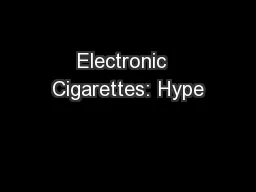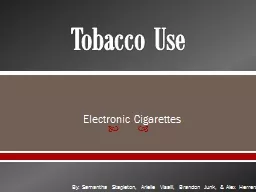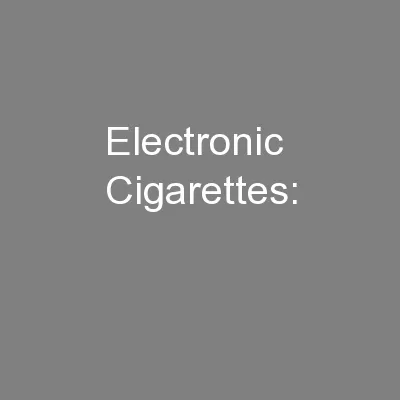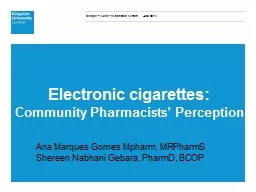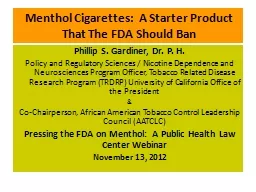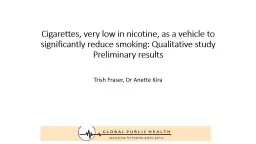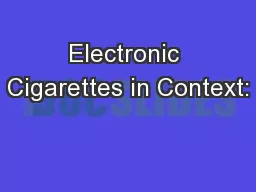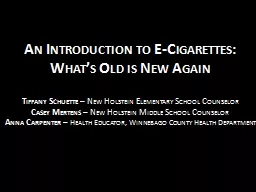PPT-Electronic Cigarettes: Hype
Author : myesha-ticknor | Published Date : 2018-03-22
Versus Science an update Audrey Darville PhD APRN CTTS FAANP Certified Tobacco Treatment Specialist UK HealthCare CoDirector Tobacco Prevention amp Treatment
Presentation Embed Code
Download Presentation
Download Presentation The PPT/PDF document "Electronic Cigarettes: Hype" is the property of its rightful owner. Permission is granted to download and print the materials on this website for personal, non-commercial use only, and to display it on your personal computer provided you do not modify the materials and that you retain all copyright notices contained in the materials. By downloading content from our website, you accept the terms of this agreement.
Electronic Cigarettes: Hype: Transcript
Download Rules Of Document
"Electronic Cigarettes: Hype"The content belongs to its owner. You may download and print it for personal use, without modification, and keep all copyright notices. By downloading, you agree to these terms.
Related Documents

